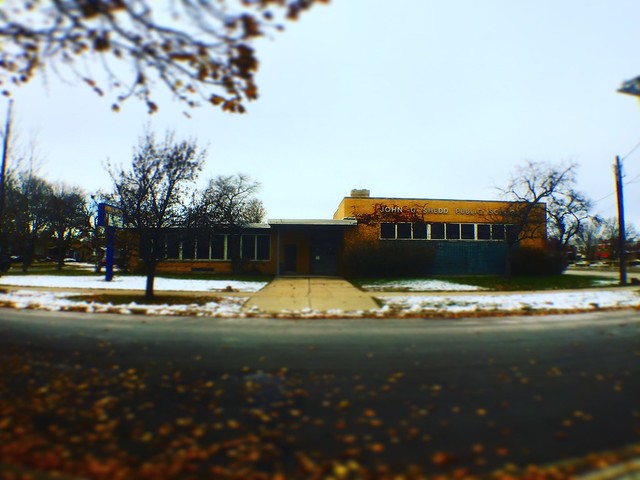[VIDEO] Jahmal Cole asks Chicagoans what the first star on the Chicago flag represents. That star represents Fort Dearborn located near the Chicago River at Wacker & Michigan. The fort was named for a former Secretary of War who served in the cabinet of President Thomas Jefferson, signer of the Declaration of Independence. Let's see how many people Cole meets that knew this information.
The city's flag you will see above in the header of The Sixth Ward and you will see another version below. The flag is part of this great city's identity.
Past Elections
Current Temperature
Friday, December 30, 2016
Monday, December 19, 2016
HINZ: As Loop population booms, South Side's plummets
So according to Crain's Greg Hinz Chicago is finally emerging from the subprime mortgage recession of the last decade, however, it seems only the loop area so far has seen the greatest gains.
So which specific neighborhoods on the south side are losing people:
The city center now is growing faster than ever, having gained an estimated 42,423 people from 2010-15. But the population of the non-lakefront South Side is dropping even quicker, falling about 50,000 in the same period. The number of non-Hispanic whites, Asians and people of Hispanic descent is growing, but the number of non-Hispanic blacks is dropping.Also:
The new data come from the 2015 American Community Survey, which is conducted by the U.S. Census Bureau and was released last week.
The Census Bureau in 2012 reported this area grew faster in the first decade of the century than any downtown in the country, adding 48,000 people. But with an unprecedented construction wave underway, growth has hit the gas, with the area—roughly the Loop, plus the Near North, Near South and Near West sides—growing almost as much in five years as it did in the previous 10.The map above illustrates where the people are going or leaving. As you see the far south side has lost almost 50,000 people. The bottom number you see, I believe is long term population loss.
The area now is home to an estimated 238,259 residents. That's enough to make it the second largest city in Illinois, if it were counted by itself.
The population is also growing in the north section of the city—roughly the North and Northwest sides, plus the demographically similar area around the West Side Medical Center, the Southwest Side and the South Side lakefront—which Zotti puts together with a few inland neighborhoods that are close by public transit to well-paying downtown service jobs. Each of those lost considerable population between 2000 and 2010, but each now is gaining people.
So which specific neighborhoods on the south side are losing people:
But the city is still losing people in Austin and other neighborhoods west of the United Center. And the total number of residents inland from the lakefront, or Far South Side, continues the free-fall that began in the last decade. Total population there has gone from 526,750 to 476,903, ACS figures show.Now the challenge is to reverse these many trends.
That's a remarkable drop of nearly 10 percent—in just five years.
Among once-solidly middle-class, industrial African-American neighborhoods that are being hammered:Overall, the population figures roughly track income data that I wrote about earlier this year, in which other demographers suggested Chicago is turning into three cities: one prosperous and growing, one vanishing, and the third treading water.
- Auburn Gresham, off 7,159 residents to an estimated 45,842.
- Englewood, down 6,911 people, to 26,121.
- West Englewood, down 6,552, to 32,156.
- Roseland, which lost 5,141 residents and is down to 42,305.
- Chatham, which has 31,359 residents after losing 3,664.
Saturday, December 10, 2016
Shedd School as seen in December
 |
| Shedd School as seen in December 2016 |
The issue of Shedd School came up at the last of this year's community meetings with Ald. Anthony Beale in October. There is interest in re-opening Shedd as a school and Beale's response was to a written question posed by a resident in attendance.
Unfortunately it was noted at the meeting that Shedd was closed because of declining enrollment. While the question noted an increase in children in the community Beale suggested that it still isn't enough to justify reopening that former school. If it were to ever re-open there may have to be consideration of bringing in students from outside of the neighborhood.
In the meanwhile the school remains for sale as there are signs on the building as I saw from this past summer, pictures were shown on our ig account. Beale pledged to let the community know of any bidders on the property.
Subscribe to:
Posts (Atom)


